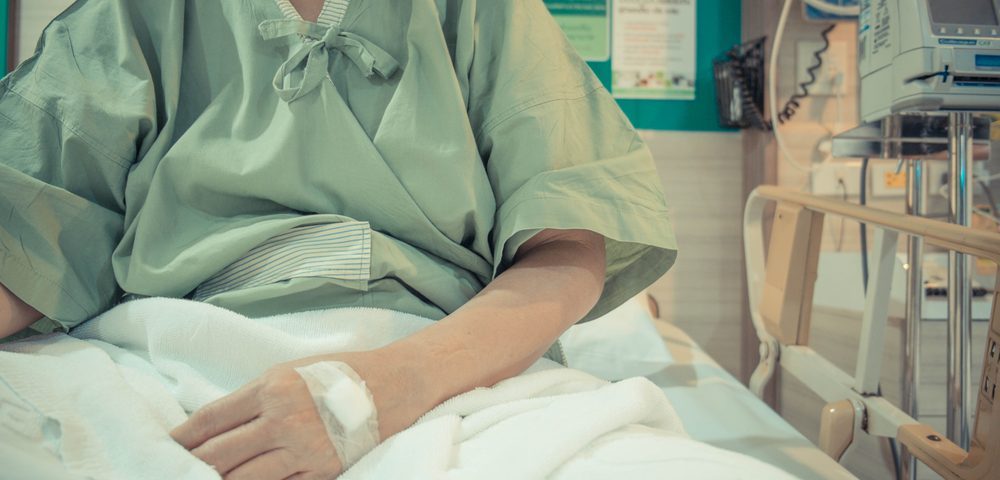In my first column, I discussed how my Crohn’s journey began with my primary sclerosing cholangitis (PSC) diagnosis almost 25 years ago.
The National Organization for Rare Disorders (NORD) estimates that “60 to 80 percent of individuals with PSC also have inflammatory bowel disease (IBD), most often ulcerative colitis,” While the probability of PSC patients having this dual diagnosis is high, only 1.4 percent to 7.5 percent of IBD patients develop PSC.
PSC is an autoimmune disease of the ducts that carry bile from the liver to the gallbladder and small intestine. Inflammation of the bile ducts causes them to stricture, or scar and narrow. Bile then accumulates in the liver, damaging the cells. Although the liver can regenerate, PSC causes scar tissue to form instead of healthy tissue. The buildup of scar tissue, or cirrhosis, results in irreversible damage and liver failure.
According to NORD, medical literature first described PSC in 1867. Although doctors have not yet found a cure, some treatments can ease symptoms and slow the progression of the disease.
One treatment is endoscopic balloon dilation. After my PSC diagnosis, my gastroenterologist (GI) performed an endoscopic retrograde cholangiopancreatography to assess my strictures. During the procedure, he inserted balloons to open the worst of the ducts. He performed the procedure as needed depending on the severity of my symptoms until I changed gastroenterologists after my Crohn’s diagnosis in 2006.
Two common medications to treat PSC are prednisone and ursodiol. As with the treatment for IBD, the corticosteroid prednisone acts as an anti-inflammatory. Because of the adverse effects of longterm prednisone use, my GI took me off prednisone and prescribed ursodiol.
Ursodiol is a synthetic form of ursodeoxycholic acid, the natural bile acid in the liver. This recommended, but controversial, treatment can decrease liver inflammation and improve liver function by increasing bile flow. I took ursodiol for more than a decade up until my transplant.
The only “cure” for PSC is a liver transplant once the patient has reached end-stage liver disease. Indications of liver failure include ascites, kidney impairment, and hepatic encephalopathy.
Ascites occurs when fluid collects in the abdomen and the lower legs. At least nine months before my liver failed, my knees began hurting when walking and kneeling. I thought I was getting arthritis as another symptom of Crohn’s or just getting older, but the swelling in my legs was putting pressure on my joints. When my gynecologist noted my abdominal bloating that summer and I noticed my clothes fit tighter, I attributed it to IBD. Ascites had also caused me to become short of breath when walking, which I blamed on anemia.
I noticed something wrong with my kidneys the day before I was admitted to the hospital. Despite ingesting nothing but liquids, I couldn’t urinate. I was planning to call my primary care physician when my GI called to tell me my recent bloodwork results had been faxed to the transplant hepatologist and for me to wait for her call.
When she called, she wanted me to admit myself to the transplant hospital in San Antonio. I was still at work in San Marcos — halfway between San Antonio and my home in Austin — so she told me I could go home first. After I packed some clothes, my husband drove me to the hospital, where we learned that I was in kidney and liver failure and had sepsis.
Ironically, I was too sick to receive a transplant. I spent the next week and a half in ICU receiving antibiotics and on dialysis. During that time, hepatic encephalopathy (HE) set in. HE can cause confusion and mental impairment.
I remember trying to pay bills and balance my checkbook. I could write the numbers but couldn’t perform simple subtraction. When I wrote a check for my husband to deposit, he had to bring it back because I had signed the memo section. Having HE has been the scariest point of my health journey, even more so than possibly dying.
Within 36 hours of being “healthy” enough to be placed at the top of the national transplant list, the transplant team found a potential donor. The next morning, the team removed my “rotten liver,” as the anesthesiologist called it, and I received the healthy liver of a 30-year-old woman whose selfless act and gift of life gave me a second chance to continue my battle with Crohn’s.
Today, I celebrate the second anniversary of my liver transplant. This column, and every single day I wake up, is in honor of my donor’s memory. To learn more about organ, eye, and tissue donation, or to sign up to be a donor, visit DonateLife.net.
***
Note: IBD News Today is strictly a news and information website about the disease. It does not provide medical advice, diagnosis, or treatment. This content is not intended to be a substitute for professional medical advice, diagnosis, or treatment. Always seek the advice of your physician or other qualified health providers with any questions you may have regarding a medical condition. Never disregard professional medical advice or delay in seeking it because of something you have read on this website. The opinions expressed in this column are not those of IBD News Today, or its parent company, BioNews Services, and are intended to spark discussion about issues pertaining to IBD.

